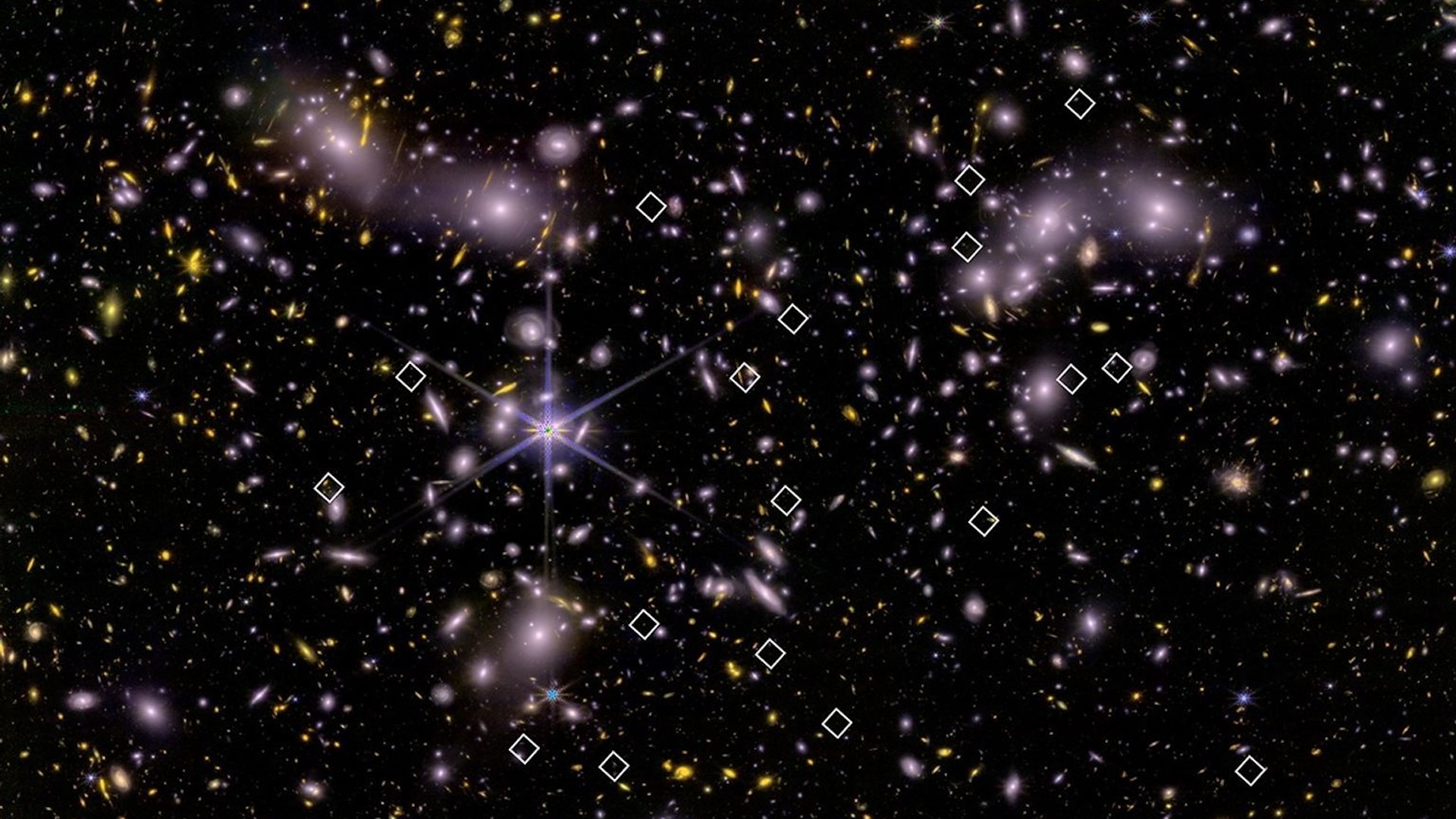Astronomers using the James Webb Space Telescope (JWST) have spotted tiny galaxies that may have driven a major transformation in the early universe.
Ultraviolet (UV) light shining from these small galaxies may have powered an epoch known as the Era of Reionization, clearing the fog of hydrogen gas that permeated the universe in its first billion years. Researchers presented the findings June 11 at the 246th meeting of the American Astronomical Society in Anchorage, Alaska.
“When it comes to producing ultraviolet light, these small galaxies punch well above their weight,” Isak Wold, an assistant research scientist at The Catholic University of America and NASA’s Goddard Space Flight Center, said in a statement.
For roughly the first billion years of its existence, the universe was full of neutral hydrogen gas. But ultraviolet light from the first stars and galaxies stripped the gas of its electrons during the Era of Reionization. Small galaxies undergoing rapid star formation, or “starbursts,” may have played a role in reionizing this fog of hydrogen.
“Low-mass galaxies gather less neutral hydrogen gas around them, which makes it easier for ionizing ultraviolet light to escape,” co-investigator James Rhoads, an astrophysicist at NASA Goddard, said in the statement. “Likewise, starburst episodes not only produce plentiful ultraviolet light — they also carve channels into a galaxy’s interstellar matter that helps this light break out.”
Related: James Webb telescope discovers ‘a new kind of climate’ on Pluto, unlike anything else in our solar system
Only about 1% of galaxies near the Milky Way today resemble those early drivers, but they were far more common when the universe was just 800 million years old and reionization had already begun.
In the new study, scientists searched for small, prolific galaxies from that time period. They pored over JWST images of a galaxy cluster known as Abell 2744, or Pandora’s Cluster, about 4 billion light-years from Earth. Through a process called gravitational lensing, the cluster’s significant mass bends light around it, magnifying tiny, distant galaxies that existed during the universe’s first billion years.
The team looked for green light emitted by oxygen atoms that had lost two of their electrons. The presence of this “doubly ionized” oxygen indicates that nearby processes were producing strong UV light that knocked off those electrons. That same UV light could have reionized the fog of hydrogen gas that permeated the universe.
From these images, the team identified 83 small starburst galaxies. “These galaxies are so small that, to build the equivalent stellar mass of our own Milky Way galaxy, you’d need from 2,000 to 200,000 of them,” co-investigator Sangeeta Malhotra, an astrophysicist at NASA Goddard, said in the statement.
But combined, those same galaxies produced a lot of UV light, and their small size allowed that light to shine farther into the universe. If these ancient galaxies are anything like present-day galaxies with high star formation rates, such as “green pea” galaxies, they could have emitted all of the UV light necessary to ionize the universe’s neutral hydrogen, according to the researchers.
“Our analysis of these tiny but mighty galaxies is 10 times more sensitive than previous studies, and shows they existed in sufficient numbers and packed enough ultraviolet power to drive this cosmic renovation,” Wold said.
